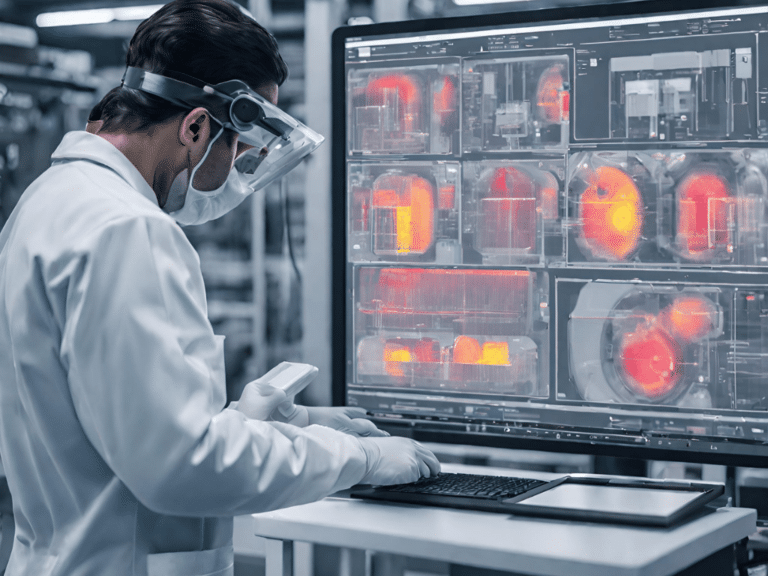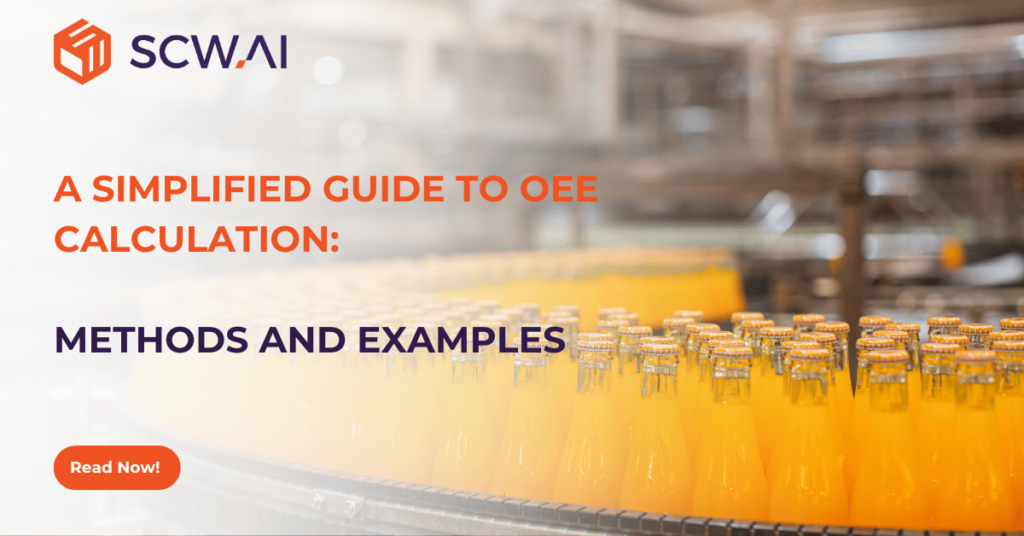
According to Deloitte, a common business challenge today is that; many firms collect extensive data but struggle to extract meaningful insights, missing valuable opportunities. For manufacturing companies, digital twin technology proves to be a valuable solution for gathering insights. Imagine simulating production scenarios, virtually inspecting equipment, and analyzing data in a way that is intuitive for managers, engineers and operators. Thus, you can facilitate a more meaningful analysis to optimize scheduling, minimize downtime and more.
While digital twins offer significant advantages for manufacturers, a Deloitte survey revealed that merely 15% of manufacturing executives intend to invest in them in the short term. We believe that this low adoption rate may stem from a lack of understanding about the technology, hence we wanted to provide comprehensive insights of everything related to digital twins in manufacturing in this article, assisting managers in making informed investment decisions and transforming their factories.
What is a Digital Twin in Manufacturing?
A Digital Twin can be defined as an AI-based virtual representation of a physical entity, process, or system that replicates its behavior, characteristics, and performance. In the context of manufacturing, digital twins can be created to represent equipment, workers, production lines, products, and more, simulating processes to enhance decision-making.
Manufacturers can leverage digital twins for various tasks, including:
- Detecting bottlenecks in production to improve overall equipment effectiveness (OEE)
- Optimizing production scheduling
- Performing real-like simulations.
- Staff training, and more.
A factory digital twin organizes data in an intuitive manner, transforming raw information into insights for operators, engineers, and managers. These insights empower stakeholders to innovate new business practices. On the other hand, digital twins can automate effective decision-making via machine learning (ML) capabilities for processes such as scheduling.
Crafting a Unique Feature Set for Effective Digital Twins
The effectiveness of digital twins hinges on both the quality and quantity of data, as well as the feature set that significantly correlates with the desired outcomes. Manufacturers rely on real-time data from IoT, PLC, and OPC devices to capture comprehensive information about their factories. However, defining a suitable feature set can be challenging, as it is unique to each factory and digital twin goal. Think of it like choosing the right instruments for your orchestra – each use case requires a different combination.
For example, a digital twin aimed at optimizing schedules needs metrics like work orders, lines, employees, and skill sets, while design improvement might focus on material properties and stress simulations.
Before feeding data to the digital twin, it often needs pre-processing to ensure accuracy and consistency. Then, the chosen features are used to create a digital model that reflects the physical system. This model is constantly updated with real-time data, allowing the digital twin to learn and evolve.
What are the advantages of digital twins in manufacturing?
Digital twins offer a compelling value proposition for manufacturers, especially when considering their seamless integration with existing Industry 4.0 investments. As Accenture highlights, embarking on a digital twin journey does not require costly rip-and-replace strategies. Instead, it acts as a bridge, integrating seamlessly with your existing cloud solutions and turning past investments in PLCs and IoTs into valuable assets for your digital twin journey.
Digital twins offer the following benefits:
- Contextualize data through simulations and virtual inspections.
- Democratize data, providing operators and engineers with the information needed to make swift decisions and address inefficiencies.
- Automate decision-making processes through AI and ML algorithms.
By simultaneously leveraging digital twins and existing digital factory technologies, manufacturers can realize desired benefits within a few months without the need for a complete factory transformation.
Top 5 Digital Twin Use Cases in Manufacturing
Digital twin applications in manufacturing are diverse, and comprehension of these applications empowers managers to design solutions tailored to their specific challenges. Here are the top 5 digital twin use cases in manufacturing:

1. Optimize Scheduling
Digital twins optimize schedules by interpreting historical production data and simulating current equipment performance, workers’ abilities, and workload. Advanced analytics (APS systems) automate the decision-making process and determine the production schedule based on current preferences, such as:
- Cost reduction
- Production speed
- Carbon footprint reduction
- Just in time production
Utilizing digital twins for production scheduling can enhance your On Time In Full (OTIF) score by predicting potential bottlenecks through historical and real-time data. Consequently, managers can establish delivery dates more accurately, safeguarding their companies from OTIF penalties and simultaneously improving customer relations.
Read our post, An In-Depth Guide to Schedule Adherence Report for Manufacturers, to find out more about how you may enhance your schedule adherence.
2. Maximize Production

One notable application of digital twins is their capability to assist managers in determining the optimal production conditions, often referred to as the “golden batch.” Virtual replicas of production processes enable managers to simulate and analyze various parameters in real-time, identifying the precise combination of factors that result in the highest quality and most efficient production runs. By leveraging this capability, managers can fine-tune production settings, such as:
- Machine speed
- Operator assignments
- Worker shifts
- Processing times, etc., to achieve the optimal output.
Once the golden batch is identified in the digital environment, manufacturers can take the next step to increase Overall Equipment Effectiveness (OEE) by replicating these ideal conditions in the physical production line. The digital twin serves as a blueprint, guiding operators to set up machinery and workers exactly as simulated in the virtual environment.
The seamless transition from the digital twin’s golden batch to real-life production not only boosts output but also ensures consistency and quality, ultimately contributing to improved overall operational efficiency in the shop-floor.
3. Allow Virtual Machine Inspection

In the context of virtual machine inspection, digital twins enable manufacturers to conduct inspections without disrupting the actual production process. By mimicking the behavior of machinery in a virtual environment, engineers can identify potential issues, predict maintenance needs, and optimize performance, ultimately leading to a reduction in downtime.
One of the significant benefits of leveraging digital twin technology in virtual machine inspection is the positive impact on equipment lifespan. Traditional maintenance practices often rely on fixed schedules or reactive responses to malfunctions, resulting in unnecessary wear and tear on machinery.
However, with digital twin-enabled inspections, manufacturers can adopt a proactive approach to maintenance. By continuously monitoring the digital twin’s performance metrics, manufacturers gain insights into the actual wear and tear patterns of the physical machinery. This enables them to implement targeted maintenance interventions, replacing or repairing components precisely when needed. As a result, the overall lifespan of manufacturing equipment is extended, reducing the frequency of unplanned downtime and contributing to cost savings for the organization.
4. Train Engineers and Operators
According to a 2023 survey conducted by the National Association of Manufacturers (NAM), the most significant challenge for US producers is attracting and retaining a quality workforce. Consequently, an essential strategy for manufacturers is to train their existing staff to enhance efficiency. The simulation capability of digital twins can play a crucial role in this regard.
Similar to training pilots in a flight simulation, companies can use digital twins to train their operators and engineers without putting company operations at risk. These simulations allow staff to leverage the historical data of the company, providing them with firsthand experience of the business challenges and potential solutions. Workers can be educated for rare but significant scenarios that affect production and prepare the workforce for possible business distributions.
5. Improve Product Design
Like other assets, businesses can create digital versions of their products, which help them simulate different design concepts without having to physically implement them. Using this method, designers can test concepts that improve product sustainability or quality, shorten time to market, and gain a competitive edge. McKinsey reports that managers have reported 3 to 5% higher sales for products armed with digital replicas, indicating that some producers have already reaped the benefits of using digital twins for product design.
Possible digital twin use cases for product design include followings:
- Decrease Time to Market: According to a McKinsey study, digital twins have been shown to reduce the time to market for some products by half. This is primarily attributed to a reduction in the number of physical prototypes produced as well as the cost of designing.
- Improve Product Quality: Digital twins enable constant testing and verification, leading to improved product quality. Managers report up to a 25% reduction in quality issues for product designs that originate from a digital replica.
- Design Sustainable Products: Approximately 80% of the environmental impact of goods is determined during the design phase, as per the European Commission. By simulating designs, manufacturers can create environmentally friendly products that either dematerialize products or utilize biodegradable materials, contributing to enhanced product circularity.
4 Manufacturing Digital Twin Best Practices

Since Digital Twin technology is still quite new for many companies, as Gartner mentioned, adopting best practices can be beneficial for managers aiming to implement this technology successfully. We have identified four crucial best practices for the successful implementation of digital twins in manufacturing:
- Define Digital Twin Application Case: As discussed, digital twins have diverse uses. Picking the right one for your factory impacts the data you need. Identifying your application area (e.g., optimizing scheduling, predicting maintenance) is crucial for a focused and efficient implementation, potentially leading to a faster ROI and reduced implementation errors.
- Collect Real-Time Data With Industrial IoT: To collect complete, accurate and real-time data, factories must automate data gathering processes. IoT tools are beneficial in this regard since they can collect a variety of data on equipment, people and environment.
- Collaborate With the Right Technology Vendor: Training AI/ML models and designing a digital twin often surpass the in-house capabilities of many manufacturers. Therefore, it is advisable to seek a technology vendor with expertise in your industry.
- Adopt Agile Implementation: For technology investments such as digital twins, it is important to proceed step by step, with each step determined by specific goals. This approach allows you to track progress towards your goals and reduces the risk of overwhelming your workers.
About SCW.AI
SCW.AI produces cloud based digital factory tools for manufacturing companies to improve their production tracking, OEE and compliance. To discover our products you can book a demo.


